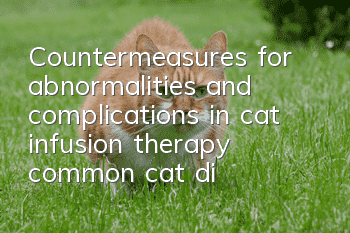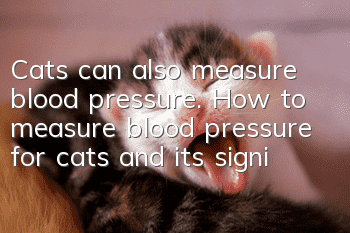Countermeasures for abnormalities and complications in cat infusion therapy, common cat diseases!

Cat infusion
Measures to deal with abnormalities and complications of cat infusion treatment, common cat diseases! In the treatment of various diseases in cats, infusion is the most commonly used method. Infusion treatment is simple and effective, but Indiscriminate use will also cause serious consequences. We humans will do skin tests for antibiotic reactions before infusion. For pets, this step is exempted, and we need to observe closely during the infusion process to prevent abnormal reactions and The emergence of complications.
1. Common causes
1. Drug reactions
Common drug reactions are mainly antibiotics, sulfa drugs, and traditional Chinese medicine preparations , dextran, etc. The reason is that the drug is impure, spoiled or the body is allergic to the drug.
2. Impurities
More tiny particles enter the solution, such as dust in the environment, rubber shavings on the bottle stopper, glass shavings, drug crystals and other insoluble precipitates. Pyrogenic reactions will occur.
3. Other reasons
The temperature of the input liquid is too low, the concentration of the drug is too high, the infusion speed, etc. can cause abnormal infusion reactions.
2. Complications
1. Dilutional acidosis
In addition to the pH of 5% NaHCO3 solution being 8.6, The pH of other infusion preparations is lower than 7. The average pH of the extracellular fluid is 7.4, so injecting this fluid will cause the pH of the extracellular fluid to drop, which is not conducive to the removal of intracellular H ions and can cause acidosis. According to reports, for every 1,000 ml of blood transfusion, 40-60 ml of 5% NaHCO3 solution needs to be added to prevent the pH from dropping.
2. Dilutional hypoalbuminemia
Each gram of albumin has a colloid osmotic pressure of 5.44mmHg, and each gram of globulin produces a colloid osmotic pressure of 1.43mmHg. If a large amount of crystalloid is infused, plasma proteins will be diluted, causing a significant decrease in plasma osmotic pressure. Not only will blood volume not be maintained, but it will also cause pulmonary edema. According to reports, when injecting a large amount of crystalloid, it should be ensured that the plasma protein is 55-60g/L, or the crystalloid and plasma substitute preparation should be input at a ratio of 3:1.
3. Dilutional hypokalemia
When a large amount of potassium-free fluid is infused, the dilution of plasma potassium will be reduced, such as when accompanied by increased urination (each rapid After urinating 1L, extracellular fluid loses an average of 20 mmol of potassium), which can quickly lead to hypokalemia. This should be noted in patients with hypokalemia. To avoid this, add 4 mmol of potassium per liter of potassium-free infusion.
3. Preventive measures
1. Actively treat the primary disease
Humoral disorders are mostly secondary manifestations of other diseases. The primary disease should be diagnosed as soon as possible, and relevant therapeutic drugs such as antibiotics, antiviral drugs, vitamins and cardiotonic agents should be appropriately added to the liquid.Mixing of drugs with incompatible properties should be avoided.
2. Supplement energy during infusion
Supply 7 calories/kg body weight of calories (energy) per day, which can prevent the body's protein catabolism; supply 25 calories/kg of body weight per day. It can prevent the catabolism of protein and fat in the body. 5% glucose can provide 0.2 calories of energy per milliliter. When injecting a large amount of glucose solution, vitamin b1 should be appropriately supplemented to promote glucose metabolism; at the same time, attention should be paid to supplementing kcl to prevent hypokalemia.
3. Infusion speed
In principle, the slower the infusion speed, the better. However, in cases of hypovolemic shock or severe dehydration, equal body temperature fluids should be infused quickly. The heart function should be auscultated during infusion, and it is best to add cardiotonic agents such as sodium caffeine. If the infusion contains ca and k ions, the infusion speed should be limited.
- What kind of cat food is good for kittens with poor gastrointestinal problems? WOWO cat food is recommended!
- How to stop a cat from barking when it's in a cage?
- There are small bumps on the cat’s belly
- Can a four-month-old female cat get pregnant?
- What do kittens need to learn? Basic training of kitten care knowledge!
- Why do cats vomit when they eat raw meat?
- What is the hard thing on the back of the cat's neck?
- Does Garfield have any disease if he eats a lot but doesn't gain weight?
- Why does a female cat kill her babies after giving birth?
- What are the characteristics of Turkish Angora cats



